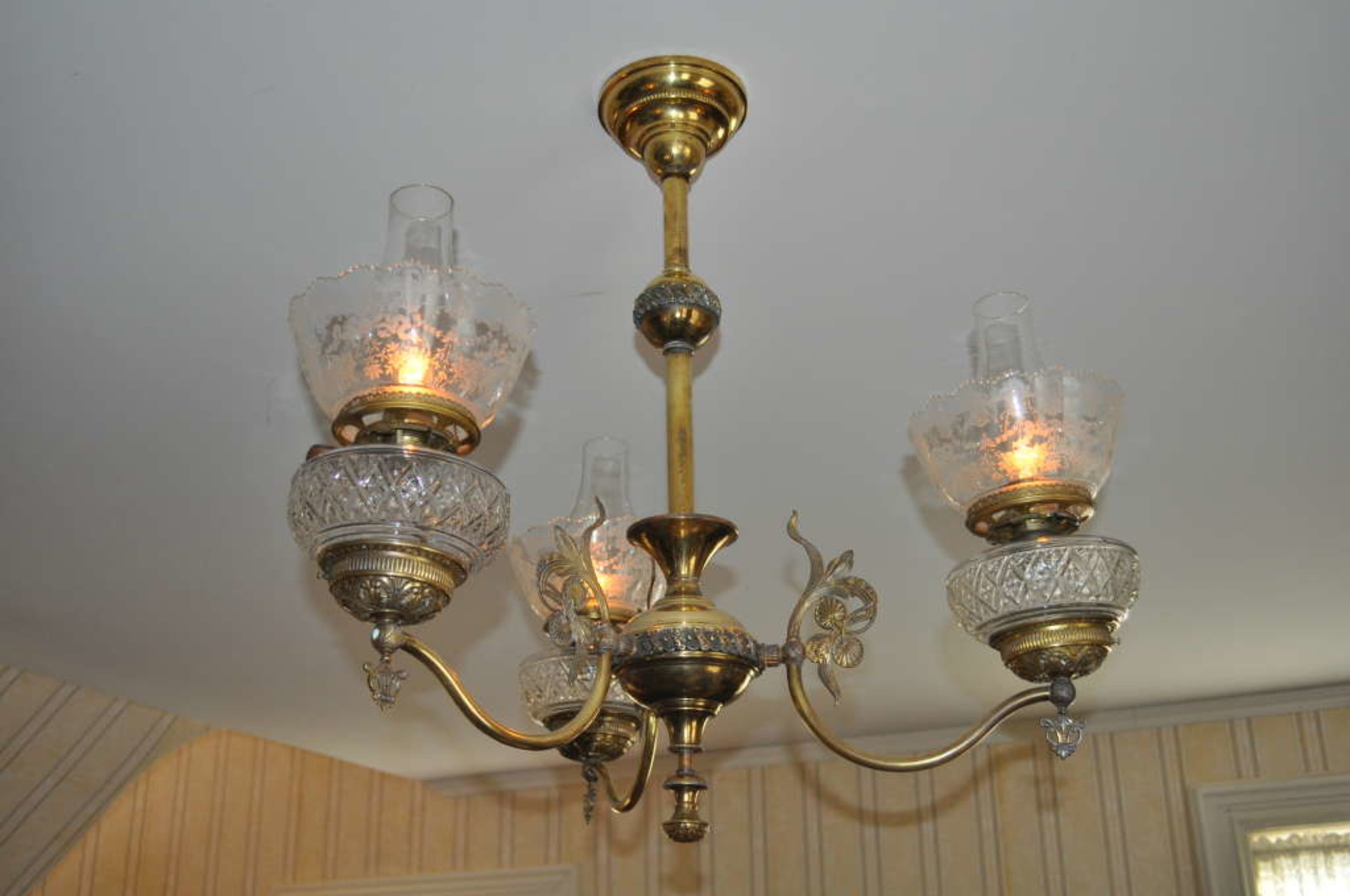A Victorian converted kerosene chandelier found at Brimfield
Q. My wife and I bought this converted kerosene chandelier at the Brimfield Antique Fair and wondering if you can tell me anything about it. It does not have any markings or labels identifying who made it.
A. Gas lamps were introduced in …
This item is available in full to subscribers.
Please log in to continue |
Register to post eventsIf you'd like to post an event to our calendar, you can create a free account by clicking here. Note that free accounts do not have access to our subscriber-only content. |
Day pass subscribers
Are you a day pass subscriber who needs to log in? Click here to continue.
A Victorian converted kerosene chandelier found at Brimfield
Q. My wife and I bought this converted kerosene chandelier at the Brimfield Antique Fair and wondering if you can tell me anything about it. It does not have any markings or labels identifying who made it.
A. Gas lamps were introduced in the early 1800’s and by 1816 the entire city of London had gas street lamps. There was the risk of fire and explosion with gas and kerosene lighting so it did not become popular in homes until the 1860’s (kerosene making its introduction in 1857). Kerosene was advertised as “non-explosive,” it burned brighter than gas and swayed many as being worth the risk. Most new upscale homes were fitted with chandeliers in each principal room and accompanied by a nearby ventilation grille (usually hidden in the recesses of a plaster ceiling rose).
According to a building conservation website “all these gas light fittings and the early incandescent mantles had to point upwards directing the light towards the ceiling and away from where the light was needed most, and it was not until 1897 that the gas mantle was adapted to burn downwards - a useful event to remember when dating gas fittings.”
This was the Victorian period and all parts of these chandeliers were highly decorated. The lamp’s hardware was mostly made of brass and most often hung from chains. To spread the light of the open flame further, frosted glass shades and prisms were popular. In addition, kerosene chandeliers required daily maintenance and so a hidden pulley system in the ceiling allowed for the chandelier to be lowered.
With the development of electricity and the incandescent bulb, many fixtures were retrofitted. It wasn’t until after World War I that electric lighting became the predominant source of light in homes.
Your chandelier appears to be brass and from around 1870-1890. I am not sure if your shades are original, but pressed glass became very popular during this time. There were many makers from that period and I cannot guess who may have made it. Parts identifying the maker could have been eliminated when the fixture was electrified. Current retail prices for a chandelier of comparable size and in good condition would start at around $300.
Karen Waterman is a fine art, antique furniture and decorative arts appraiser in the East Bay area and will answer as many questions regarding your “hidden treasures” as possible. By sending a letter or email with a question you give full permission for use in the column. Names, addresses or e-mail will not be published and photos will be returned if requested. Send e-mails (digital photos preferred ) to watermanappraisal@gmail.com. Send snail mail to Waterman Appraisal and Consulting Services, P.O. Box 134, Barrington, RI 02806.






